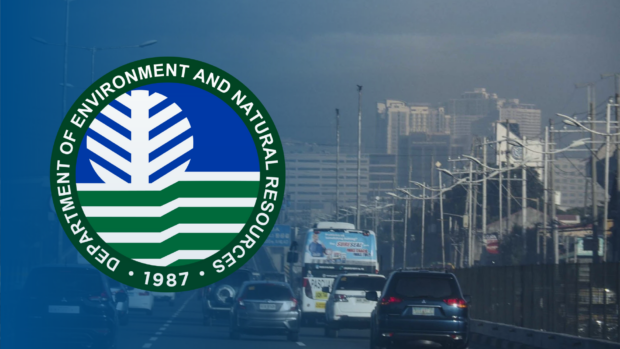Metro Manila air quality remains ‘good to fair’ – DENR
MANILA, Philippines — The air quality in Metro Manila remains under “good” to “fair” categories as of 11 a.m. on Tuesday, according to the Department of Environment and Natural Resources (DENR).
The agency said it checked the air quality in Metro Manila for Particulate Matter 10 (PM10) and PM2.5.
READ: Metro Manila ‘haze’ likely due to pollution not Taal vog – Phivolcs
PM10 is a microscopic matter measuring 10 micrometers or less suspended in the air. One example of PM10 is dust from roadways and construction sites, according to the DENR’s Environmental Management Bureau (EMB).
On the other hand, PM2.5 is a particle that measures 2.5 micrometers or less and can enter the lungs and the bloodstream, the EMB said.
Article continues after this advertisementBelow is the list of areas and their air qualities based on EMB’s latest data:
Article continues after this advertisementPM10
Caloocan – good or 0 to 54 air quality index (AQI)
San Juan – good or 0 to 54 AQI
Makati – good or 0 to 54 AQI
Parañaque – good or 0 to 54 AQI
Pateros – good or 0 to 54 AQI
Taguig – fair or 55 to 154 AQI
PM2.5
Caloocan – fair or 25.1 to 35 AQI
Makati – good or 0 to 25 AQI
Parañaque – good or 0 to 25 AQI
Pateros – good or 0 to 54 AQI
The EMB did not provide data on other areas.
Based on the agency’s bulletin, air quality under the “good” category is considered “satisfactory, and air pollution poses little or no risk.”
Meanwhile, those under “fair” are acceptable, “however for some pollutants, there may be a moderate health concern for a very small number of people who are unusually sensitive to air pollution.”
For other categories such as “unhealthy for sensitive groups,” the AQI ranges from 101 to 150, where people with respiratory disease should limit outdoor exertion.
Under the “very unhealthy” category, the AQI ranges from 151 to 200. People with heart or respiratory disease should stay indoors and individuals should voluntarily restrict the use of vehicles.
In the “acutely unhealthy” category, the AQI could reach from 201 to 300. If this happens, people with heart and respiratory disease should limit outdoor exertion. The use of motor vehicles may be restricted, while industrial activities may be curtailed.
Under the “emergency” category, the AQI ranges from 300 and above. Everyone must stay indoors and keep their windows and doors closed.
In an interview on Tuesday, Philippine Institute of Volcanology and Seismology Director Teresito Bacolcol said the observed haze in Metro Manila is “likely due to local pollutants” and not vog.
Earlier, the Municipal Disaster Risk Reduction Management Council of Talisay town in Batangas announced that there is an “increased presence of volcanic smog (vog) in the area” due to “the ongoing degassing activity of Taal Volcano.”
The vog contains droplets that carry volcanic gases such as sulfur dioxide that can irritate the eyes, throat, and respiratory tract.
Meanwhile, smog is derived from smoke and fog and can also reduce visibility.
